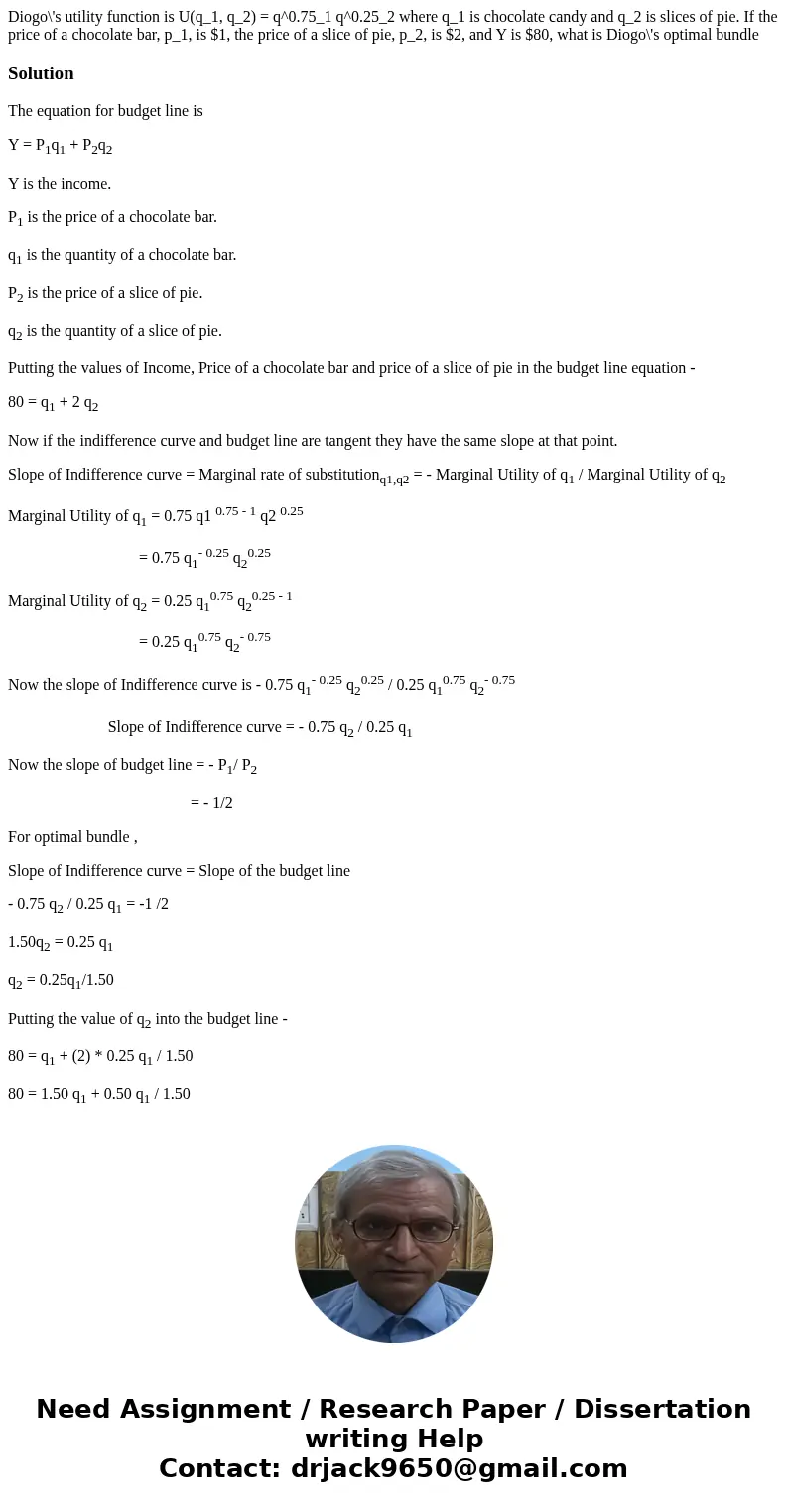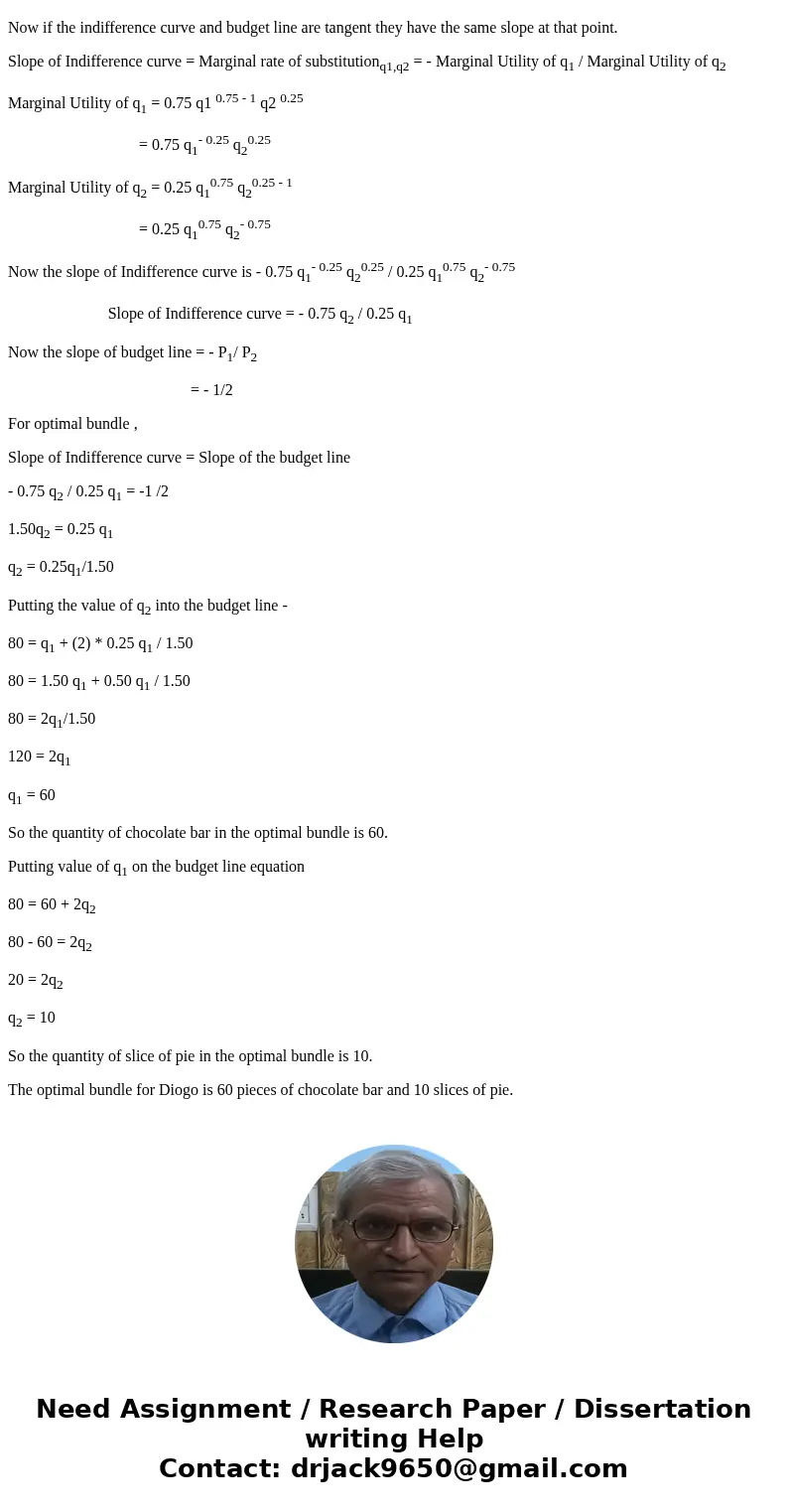Diogos utility function is Uq1 q2 q0751 q0252 where q1 is c
Solution
The equation for budget line is
Y = P1q1 + P2q2
Y is the income.
P1 is the price of a chocolate bar.
q1 is the quantity of a chocolate bar.
P2 is the price of a slice of pie.
q2 is the quantity of a slice of pie.
Putting the values of Income, Price of a chocolate bar and price of a slice of pie in the budget line equation -
80 = q1 + 2 q2
Now if the indifference curve and budget line are tangent they have the same slope at that point.
Slope of Indifference curve = Marginal rate of substitutionq1,q2 = - Marginal Utility of q1 / Marginal Utility of q2
Marginal Utility of q1 = 0.75 q1 0.75 - 1 q2 0.25
= 0.75 q1- 0.25 q20.25
Marginal Utility of q2 = 0.25 q10.75 q20.25 - 1
= 0.25 q10.75 q2- 0.75
Now the slope of Indifference curve is - 0.75 q1- 0.25 q20.25 / 0.25 q10.75 q2- 0.75
Slope of Indifference curve = - 0.75 q2 / 0.25 q1
Now the slope of budget line = - P1/ P2
= - 1/2
For optimal bundle ,
Slope of Indifference curve = Slope of the budget line
- 0.75 q2 / 0.25 q1 = -1 /2
1.50q2 = 0.25 q1
q2 = 0.25q1/1.50
Putting the value of q2 into the budget line -
80 = q1 + (2) * 0.25 q1 / 1.50
80 = 1.50 q1 + 0.50 q1 / 1.50
80 = 2q1/1.50
120 = 2q1
q1 = 60
So the quantity of chocolate bar in the optimal bundle is 60.
Putting value of q1 on the budget line equation
80 = 60 + 2q2
80 - 60 = 2q2
20 = 2q2
q2 = 10
So the quantity of slice of pie in the optimal bundle is 10.
The optimal bundle for Diogo is 60 pieces of chocolate bar and 10 slices of pie.


 Homework Sourse
Homework Sourse